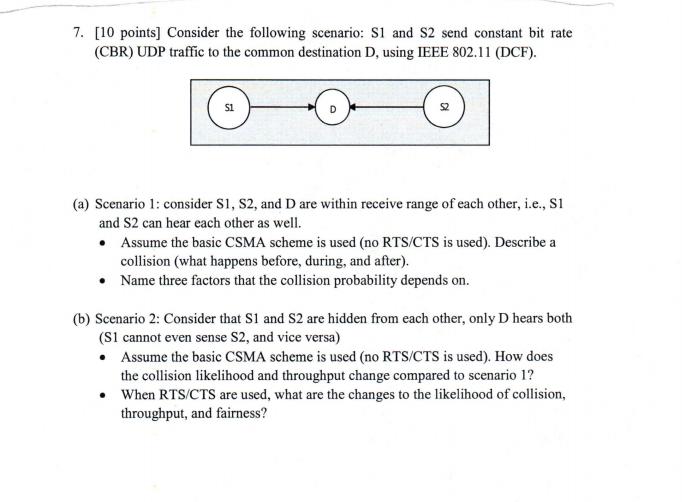Answered step by step
Verified Expert Solution
Question
1 Approved Answer
7. [10 points] Consider the following scenario: S1 and S2 send constant bit rate (CBR) UDP traffic to the common destination D, using IEEE

7. [10 points] Consider the following scenario: S1 and S2 send constant bit rate (CBR) UDP traffic to the common destination D, using IEEE 802.11 (DCF). 52 (a) Scenario 1: consider S1, S2, and D are within receive range of each other, i.e., S1 and S2 can hear each other as well. Assume the basic CSMA scheme is used (no RTS/CTS is used). Describe a collision (what happens before, during, and after). Name three factors that the collision probability depends on. (b) Scenario 2: Consider that S1 and S2 are hidden from each other, only D hears both (S1 cannot even sense S2, and vice versa) Assume the basic CSMA scheme is used (no RTS/CTS is used). How does the collision likelihood and throughput change compared to scenario 1? When RTS/CTS are used, what are the changes to the likelihood of collision, throughput, and fairness?
Step by Step Solution
There are 3 Steps involved in it
Step: 1

Get Instant Access to Expert-Tailored Solutions
See step-by-step solutions with expert insights and AI powered tools for academic success
Step: 2

Step: 3

Ace Your Homework with AI
Get the answers you need in no time with our AI-driven, step-by-step assistance
Get Started


